Babylonia
Q61874572Babylonia is the Greek name of what the inhabitants knew as Mât Akkadî, the fertile alluvial plain between the Euphrates and Tigris. This was the heartland of the Babylonian Empire, which dominated the ancient Near East between the fall of the Assyrian empire (612 BCE) and the rise of the Achaemenid Empire (after 539). Its capital was Babylon.
The land

In a well-known description of ancient Babylonia, Berossus (or Bel-re'ušunu, to use his real name) says that
the land lies between the Tigris and the Euphrates rivers. It produces wild barley, chickpea, and sesame, and even, in its marshlands, edible roots, called gongai. These roots are the equal of barley in nutrition. The land also produces dates, apples, and all sorts of other fruit, as well as fish and birds, field birds as well as waterfowl. There are also in the land of the Babylonians waterless and infertile regions near Arabia, while lying opposite Arabia there are hilly and fertile areas.note
Another ancient author, the Greek researcher Herodotus of Halicarnassus, was impressed by the fertility of ancient Babylonia
So great is the fertility of the grain fields that they normally produce crops of two-hundredfold, and in an exceptional year as much as three-hundredfold. The blades of wheat and barley are at least three inches wide. As for millet and sesame, I will not say to what an astonishing size they grow, though I know well enough; but I also know that people who have not been to Babylonia have refused to believe even what I have already said about its fertility.note

Of course, this is exaggerated, and it should be noted that Herodotus does not claim that he was in Babylonia. Yet, his statement shows that people believed that the alluvial plains of the Lower Euphrates and Tigris were extremely fertile, and this is correct, although the yields were typically fifteenfold, which is, compared to the Mediterranean world, astonishing. Among the main products were barley, wheat, sesame, cress, and lentils.
Another factor contributing to Babylonia's agricultural wealth was the use of the seeder plough. It remained unknown in the west (Greece and Rome), but when it was introduced in Europe in the nineteenth century, the productivity climbed with no less than 50%.
The Sumerians
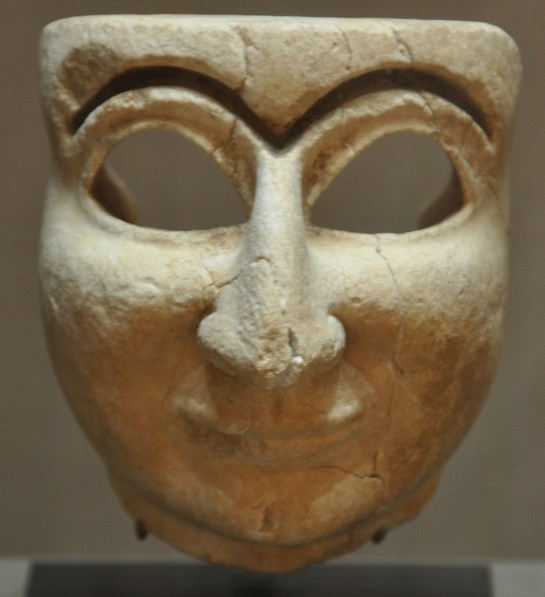
In the fourth and third millennium, the alluvial plain witnessed the rise of the world's first urban centers and monarchies, together with the first attempts to write (in cuneiform script), to build temples, create monumental works of art, organize an administration, and build empires. One of the first cities was Uruk, which in c.3200 BCE measured some 250 hectares.
We do not know what language these "inventors of civilization" spoke, because the oldest texts are written with simple pictograms, which can represent any language. When in c.2600 these pictograms were for the first time used to represent syllables and abstract principles, a real script has been invented. By then, the people spoke Sumerian. Some of their literary texts, like the Eridu Genesis, became "classics" and influenced the writers of Babylonia, Judah, and Greece.
In this period, the Early Dynastic Age, city states like Uruk, Ur, Larsa, Eridu, Lagaš, Umma, Isin, Nippur, and Kiš, were important, and we read about their relations, which were sometimes friendly and sometimes hostile. One of the problems the Sumerians encountered was the irrigation of the plain, and war was sometimes waged about access to water. Kiš seems to have claimed some sort of superiority, but the details are obscure, and we are certain that Nippur was a very important center too. Its god Enlil was head of the Sumerian pantheon.
The Akkadians
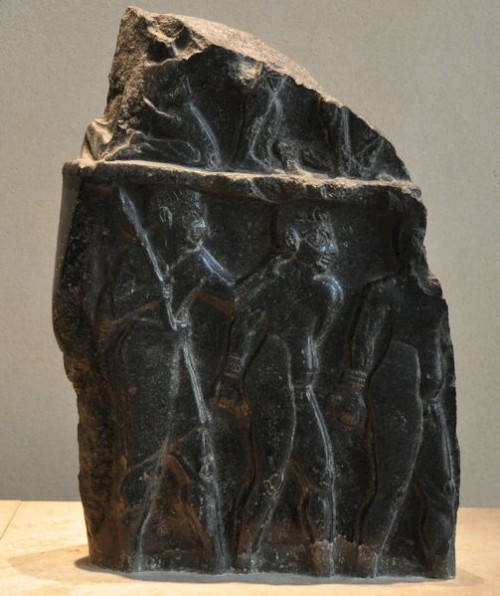
The Sumerians were not the only people living in this area. Our sources also refer to the Akkadians, who may be an illiterate, lower class that was slowly moving upward in the social pyramid, or an invading nation. We don't know, but it is certain that they spoke a Semitic language related to modern Arabic and Hebrew. In the second millennium, the Akkadian language was spoken and written all over Mesopotamia, although there was a southern (Babylonian) and a northern (Assyrian) variant. In the fourteenth century, it had become the language of international diplomacy, and we find Akkadian texts as far away as Turkey and Egypt. It remained important for the next millennium or so, and was still -although rarely- written in the third century CE. No language in world history can be traced over so long a period.
The Akkadian language is called after Agade, a not identified city that was the first to use Akkadian as the language of its chancellery. Its most famous king, Sargon, may have ruled from 2296 to 2240. His reign was the culmination of a process that had started earlier: several Sumerian kings had tried to unite all city states, but the first to do so was Sargon. For the first time, the people living on the alluvial plain of southern Mesopotamia were united in a strong, centralized state. An empire, in other words. Sargon's armies invaded Elam in the east, Syria in the west, Subartu in the north, and marched against the Arabs in the south, so that his descendants could claim with some justification to be the "kings of the four corners of the world". There were trade contacts with Anatolia and India.

The descendants fought wars against the Gutaeans, people living in the Zagros mountain range. However, these enemies were invincible, and the Akkadian dynasty lost credit. The new ruler of the united cities was king Ur-Nammu of Ur, the founder of the Empire of the Third Dynasty of Ur. It continued what Sargon had started, and is often dated to 2112-2004.
The central institutions were strengthened and there is a surprising wealth of administrative sources, written in Sumerian.note A bureaucracy ruled the towns, which were now provinces with governors, and no longer independent cities. However, in ca.2000, the Third Dynasty of Ur lost control after some kind of ecological crisis that may be due to climatological changes, a succession of bad harvests after the impact of a giant meteor, or simply bad irrigation. However this may be, the central state collapsed, and from the west, the Amorites (until then regarded as "truffle-eating barbarians") entered the region and captured Isin, Larsa, and a new city, never heard of before: Babylon.
Empire
All of a sudden, it is there, out of the blue, and quite powerful. At the same time, the city of Agade disappears from our sources. Later, the country surrounding Babylon (which we call Babylonia) was called Mât Akkadî, "the country of Agade". It has been assumed that Babylon is in fact the lost capital of Sargon, but we will probably never be able to test this hypothesis, because the oldest building phase of Babylon is far below groundwater level.
The most famous Babylonian king was Hammurabi (r.1792-1750?), who was able reunite southern Mesopotamia. East of the Tigris, he attacked Elam, Ešnunna, and the mountain tribes in the Zagros; in the north, his armies reached Aššur; in the northwest, he captured Mari; and he accepted Harran as the northernmost city of his kingdom. This empire was to last for a century and a half, but in 1595(?), Babylon was captured and sacked by a Hittite army.
Classics
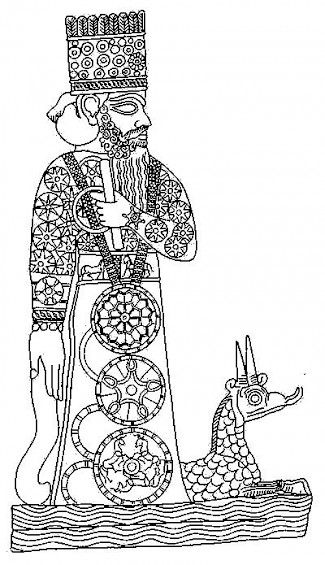
Yet, this period was always remembered, and it is not exaggerated to say that in the eighteenth century, the foundations were laid for the Babylonian culture, which was to last for almost two millenniums. The pantheon changed considerably, and the hitherto unimportant city god of Babylon, Marduk, became the head of the pantheon, replacing Enlil, the old supreme god who was still all-powerful in, for example, the Epic of Atrahasis. The syncretism is expressed in the words that Marduk is "the enlil of the gods", which may be rendered as "president of the council of gods". For the moment, Marduk's claim to be the supreme god was only recognized in Babylon, but in the fourteenth century, it had been recognized by the other cities too.
Marduk's temple, the Esagila, became very famous, and replaced the old sanctuary of Nippur as major cult center. In Babylon, the world was created, and the Babylonian ziggurat, which was called Etemenanki, was regarded as the foundation of heaven on earth. Every year, the gods of the Babylonian cities came to Babylon to visit Marduk and celebrate the Akitu (New Year) festival. In the creation epic Enûma êliš, Babylon is the center of the universe.
This important text was to become a Babylonian "classic" that was read and copied for more than a millennium and a half. Another important text composed in this period was the Epic of Gilgameš, which is known from copies that were found all over the ancient Near East, including Nineveh, Hattusa, Emar, and Megiddo.
The cult for other Babylonian gods became popular too: for example Nabû, the god of the scribes, the sun god Šamaš, and Ištar, the goddess of love and war. She resembles the Sumerian goddess Inana. In general, we can say that the Babylonian civilization contained many Sumerian elements. The Sumerian language had by now been replaced by Akkadian, but was still learned by people and the ancient texts were still copied. In fact, you cannot write Akkadian unless you recognize many Sumerian signs.
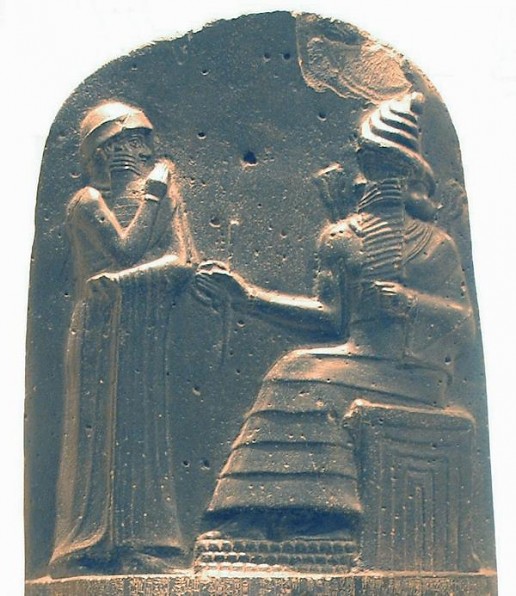
In our times, the Babylonian laws of king Hammurabi have become famous. The stela (which is now in the Louvre in Paris) on which the regulations were inscribed, is one of the best-known monuments from Antiquity. Yet it is unclear how important the laws of Hammurabi really were. When the stela was discovered in Susa, it was the first known non-Biblical law code of the ancient Near East. Now, we know of quite a few other codifications, and the laws of Hammurabi are less unique than they once were. Besides, the real significance of the regulations it is still unclear. In a society that was overwhelmingly illiterate, people would never know their rights if they depended upon a written text, and it is possible that the stela was in fact only meant to show to the eternal gods that the king was a just man, or tried to be.
Influence
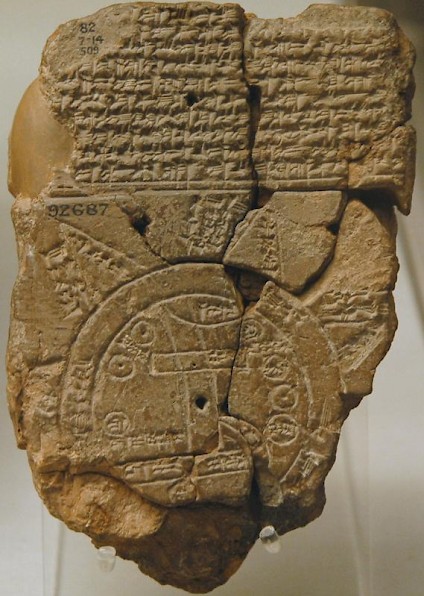
Although during the next centuries the political fortunes of Babylonia were fluctuating (more...), the Babylonian civilization continued to influence all neighboring states: Elam and Assyria, but also Syria and Persia. Babylonian artistic motifs like the bull with a man's head (lamassu) have been found in Hattusa, Karchemish, Nineveh, and Persepolis. A relief showing one of the heroes of the Babylonian creation myth, Oannes, can be found as far to the east as Pasargadae. The library of the Assyrian king Aššurbanipal (668-631) in Nineveh contained many literary texts from Babylonia, including, as we already noted, the Epic of Gilgameš. Greek philosophers tried to learn something in Babylon. The Jews copied the Babylonian calendar. The Akitu festival was still celebrated in the early third century CE in Emessa in Syria, and during the brief reign of the emperor Heliogabalus (r.218-222) even in Rome. The list is endless.
Science
The most fascinating later innovation of Babylonian culture was the invention of astronomy by the scientists that are usually (although incorrectly) called Chaldaeans. The development started early: we possess a list of systematic observations of Venus written down under king Ammisaduqa (r.1646-1626?). Later, the Babylonians created stellar catalogues and a nearly perfect calendar. In the eighth century, they were able to predict eclipses, which they regarded as evil omens that announced the beginning of a dangerous period. The importance of these predictions cannot be exaggerated. Now that dangerous periods were predictable, it was possible to appoint substitute kings who would bear the brunt of the gods' wrath. The real king would remain unharmed and the continuity of the state's policy was guaranteed. (The poor man who was appointed as substitute king was killed. In this way, the omen was always right.)
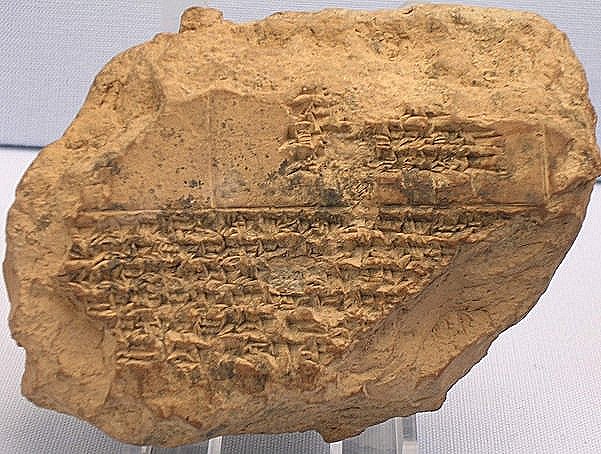
This is, of course, astrology, not astronomy. But in the fifth or fourth century, the Babylonians, who had always been good in mathematics, developed two mathematical systems to predict eclipses and dangerous periods (explained here). Now, we are really talking about science in the modern sense of the word. Mathematics and astronomy are the lasting legacy of ancient Babylonia.
Decline
Yet, when the Chaldaeans did their greatest discoveries, Babylonia had lost its political independence for good. After the glory of the Old Babylonian kingdom of Hammurabi, its capital was captured by Kassites, a Babylonized tribe from the Zagros. They and their successors as rulers of Babylonia, the Second Dynasty of Isin, continued to rule the country from one central capital, propagated the cult of Marduk, and ordered the scribes to copy the classical literary texts. The twelfth and eleventh centuries saw the political disintegration of Babylonia, but Babylon remained the universally recognized cultural capital of the world, and invading tribes usually accepted Babylonian culture.
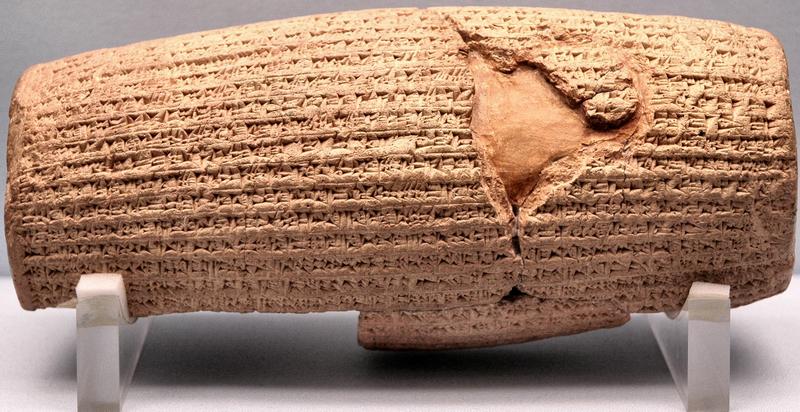
When Assyria started to increase its power in the tenth century, its kings proudly accepted the Babylonian legacy, and usually treated Babylon kindly. After the fall of the Assyrian capital Nineveh in 612 (text), Babylon was briefly the political center of the Near East, but the splendor of the kingdom of Nabopolassar and Nebuchadnezzar, which is documented in the Babylonian chronicles, was short-lived. In 539, the Persian king Cyrus the Great captured Babylon (texts), and he treated the ancient city and the Babylonians just as respectful as other conquerors had done. One of Cyrus' most important texts, the Cyrus Cylinder, is written in Akkadian and presents him as the king chosen and loved by Marduk. His son Cambyses accepted the Babylonian calendar, and Akkadian was one of the three official languages in the early period of Persian domination.
Persian Period
For two centuries, Babylon was one of the most important cities in the Achaemenid Empire, and the Babylonians shared in the ups and downs of the Persian monarchy. The Astronomical Diaries (which document the entire period of 652 to 60 BCE) inform us about political events in the city and tell us about the prices of products, so that we can start to write an economical history of Babylonia.
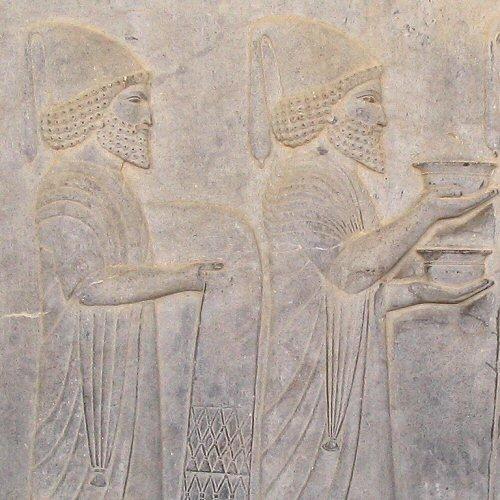
But Babylonian language, literature and civilization were slowly being superseded. The Persian government increasingly preferred Aramaic as the language of their chancellery, and the Akkadian language was no longer used in the Achaemenid royal inscriptions after the reign of Artaxerxes I Makrocheir (r.465-424).
Hellenistic Period
Things really changed when the Macedonian conqueror Alexander the Great defeated the last Persian king Darius III Codomannus. Alexander settled Greeks and Macedonians in Babylonia, where he founded a city called Charax. Alexander's successor Seleucus I Nicator ordered the building of another Greek city, Seleucia; later, Uruk was refounded as a Greek town too, and king Antiochus IV Epiphanes (r.174-164) settled Greeks in Babylon again (text).
The Babylonian Chronicles of the Hellenistic Period, which were studied for the first time in 2003, will no doubt offer new insights in this period. The fact that these chronicles exist is interesting enough: their publication, and the continuation of the series of Astronomical Diaries, proves that Babylon still was a cultural center of some local significance. The great days were over, but the city was still important when the Parthians took over the region in 141 BCE.
Babylonia was a rich country. It could afford to pay large number of scribes, scholars, and - sometimes - soldiers. This explains why its language, literature, and culture could spread over the ancient Near East, and why its influence lasted so long.